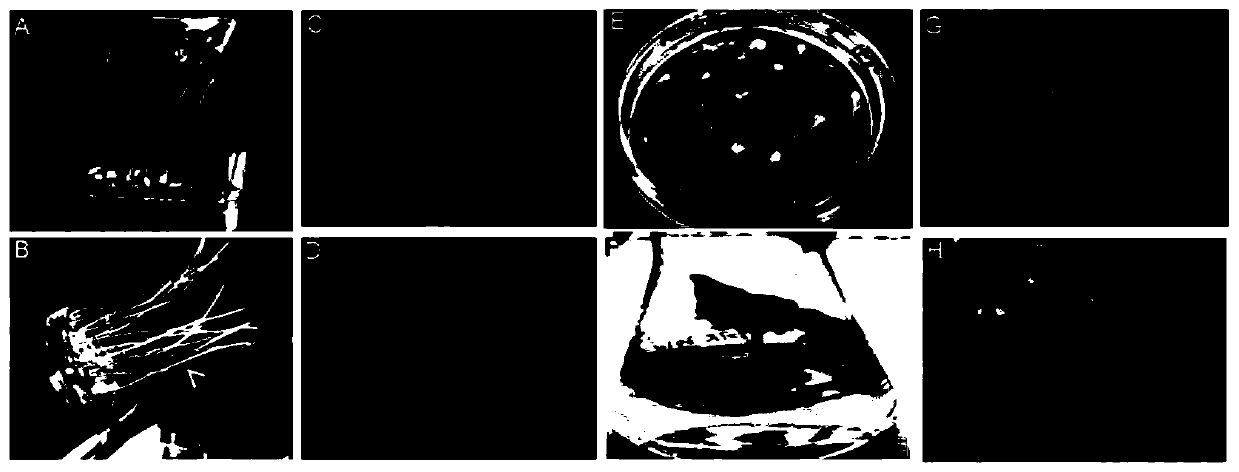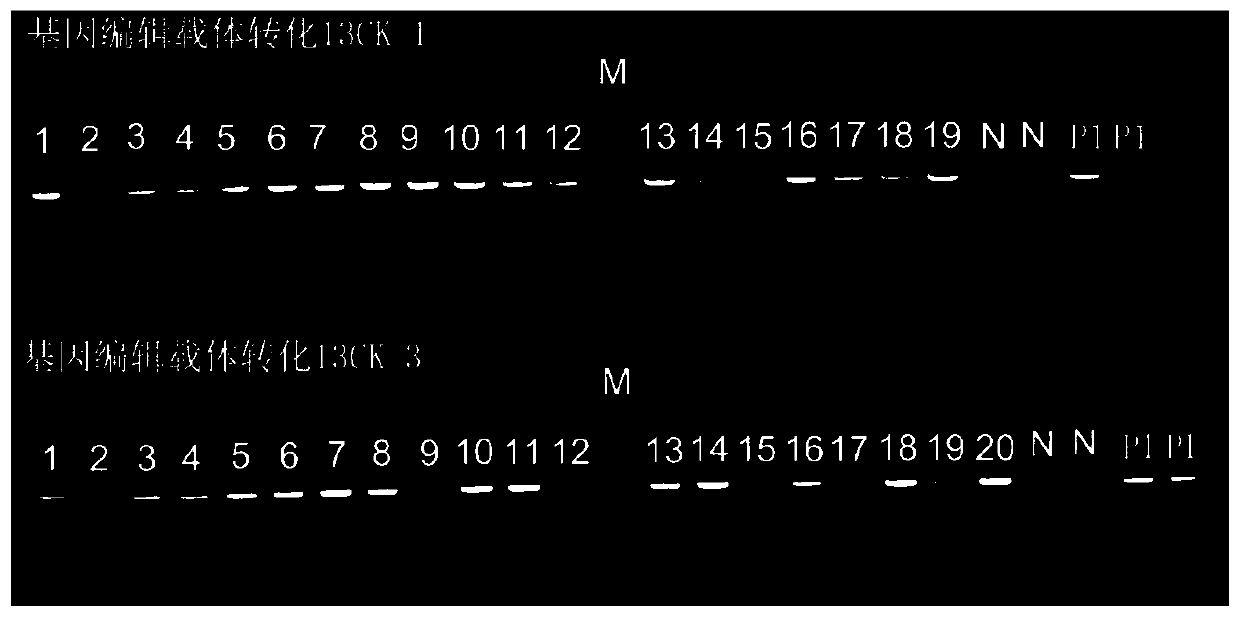Method for obtaining rape variety with low seed glucosinolate content
A rape and glucosinolate technology, which is applied in the directions of chemical instruments and methods, botanical equipment and methods, biochemical equipment and methods, etc., can solve the problems of reduced disease resistance and aggravation of diseases and insect pests in rapeseed, and achieves easy operation and guaranteed disease resistance. high-efficiency editing effect
- Summary
- Abstract
- Description
- Claims
- Application Information
AI Technical Summary
Problems solved by technology
Method used
Image
Examples
Embodiment 1
[0032] The acquisition of the rape plant of embodiment 1 seed low glucosinolate content
[0033] Brassica napus 13CK-1 (119 μmol / g glucosinolate content) and 13CK-3 (129 μmol / g glucosinolate content) were selected as the recipient lines for genetic transformation, both of which belong to rape materials with high glucosinolate content in seeds. According to the sequence information of Brassica napus reference genome website (http: / / www.genoscope.cns.fr / brassicanapus / ), BnaA02g33530D was isolated from the materials of 13CK-1 and 13CK-3 and named as BnGTR2A2. The gene sequence is shown as SEQ ID NO .1 shown.
[0034] The sequence of the BnGTR2A2 gene was submitted to the CRISPR-P (http: / / cbi.hzau.edu.cn / crispr / ) website, and the gene editing target sites with a low off-target rate were screened and named GTR2SgRNA1 and GTR2SgRNA2. The sequence of the GTR2SgRNA1 is as follows: Shown in SEQ ID NO.2, specifically: CTTGGGCCTGTACACGTGA GGG , GGG It is a PAM sequence; the sequence...
Embodiment 2
[0041] Example 2 Analysis of Editing Sites in Transgenic Positive Plants
[0042] In order to further confirm the editing efficiency of positive individual plants, primers were designed to analyze the sequences of the target sites GTR2A2SgRNA1 and GTR2A2SgRNA2 of the BnGTR2A2 gene in the gene-edited 13CK-1 material (K1m for short). In order to obtain the target gene sequence from the K1m material, the target fragment was amplified by checkGTR2A2-F and checkGTR2A2-R, and the mutation type was analyzed by sequencing. At the same time, T1-N2gtr2a2-F and T1-N2gtr2a2-R, T2-N2gtr2a2-F and T2-N2gtr2a2-R primers were respectively designed to amplify the two target sites of GTR2A2SgRNA1 and GTR2A2SgRNA2 and analyzed by polyacrylamide gel electrophoresis. The sequences are shown in Table 3, and the detection results are as follows Figure 4 with Figure 5 shown.
[0043] Table 3 Primers for detecting gene editing sites
[0044]
[0045] Sequencing analysis of the GTR2A2SgRNA1 tar...
Embodiment 3
[0048] Example 3 Detection and Analysis of Seed Glucosinolate Content of Gene Edited Plants
[0049] Using liquid chromatography detection method to analyze the non-transgenic material and the target gene mutated T 0 generation plants and gene-edited T 1 Contents of glucosinolates in mature seeds harvested from generations of families,.
[0050] The determination of glucosinolate content adopts the international standard method of ISO9167-1:1992 (E) high performance liquid chromatography, as follows: ① glucosinolate extraction: Accurately weigh 0.2000g of the prepared sample into a centrifuge tube, and keep it warm in a 75°C water bath Inactivate for 1 min, add 2ml 70% methanol extract and 200μl internal standard, centrifuge, transfer the supernatant to a test tube, then add 2ml 70% methanol to extract and centrifuge, repeat 3 times, mix the supernatant, take 2ml solution on Acetic acid type DEAE-Sephadex A-25 anion exchange column, add 500 μl of sulfatase, take out after 20...
PUM
 Login to View More
Login to View More Abstract
Description
Claims
Application Information
 Login to View More
Login to View More - R&D
- Intellectual Property
- Life Sciences
- Materials
- Tech Scout
- Unparalleled Data Quality
- Higher Quality Content
- 60% Fewer Hallucinations
Browse by: Latest US Patents, China's latest patents, Technical Efficacy Thesaurus, Application Domain, Technology Topic, Popular Technical Reports.
© 2025 PatSnap. All rights reserved.Legal|Privacy policy|Modern Slavery Act Transparency Statement|Sitemap|About US| Contact US: help@patsnap.com



